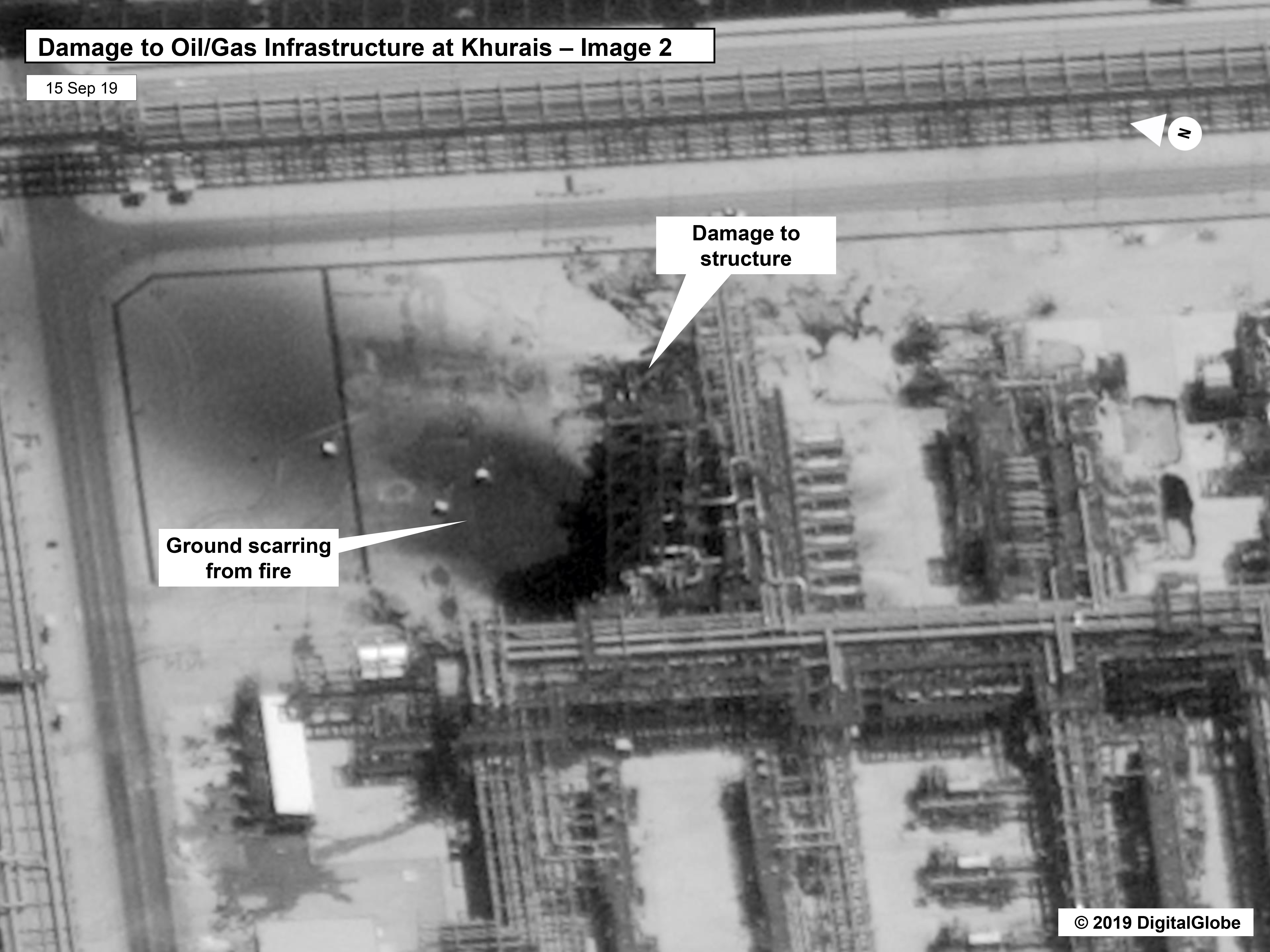Trump Is Convinced Iran Was Behind the Massive Attack on Saudi Oil Facilities

Credit to Author: David Gilbert| Date: Mon, 16 Sep 2019 12:21:44 +0000
U.S. President Donald Trump said Sunday night that the U.S. is “locked and loaded” and ready to respond to a devastating attack on Saudi oil facilities over the weekend. And though Houthi rebels in Yemen have claimed responsibility, the White House seems intent on pointing the finger at Iran.
Two of Saudi Arabia’s oil facilities were hit, including Abqaiq, the world’s largest petroleum processing plant, causing the biggest disruption in the world’s oil supply in history.
The attacks halted production of 5.7 million barrels of crude a day, more than half of the Kingdom’s global daily exports. The price of oil spiked 20 percent on Monday morning, before dropping to trade 10 percent higher.
Houthi rebels said they launched the attacks using drones, but U.S. officials have dismissed their claims, laying the blame on Tehran instead.
On Saturday, Secretary of State Mike Pompeo tweeted that there was no evidence the weapons were launched in Yemen and accused Iran of “an unprecedented attack on the world’s energy supply.”
Pompeo joined Vice President Mike Pence and Defense Secretary Mark Esper at the White House Sunday for a National Security Council meeting to discuss the attack.
In an off-the-record briefing with journalists Sunday, U.S. officials shared detailed satellite photos of the attack sites, claiming they showed that missiles and drones had attacked from a west-north-west direction, and not from Yemen in the south.
The officials also said cruise missiles were used in the attack, alongside drones.
Officials said all options, including a military response, were on the table.
Trump held back from naming Iran in his Sunday night tweet, simply saying “we know the culprit.” Trump, who has threatened Iran with military action several times in recent months, said he would wait for word from Saudi Arabia before taking action.
Iran dismissed the allegations, and said it was prepared for a “full-fledged” war.
What happened on Saturday?
The Houthis said they launched the aerial attacks using 10 drones, which would make it by far the rebel group’s most audacious attack on Saudi Arabia since the kingdom intervened in Yemen’s civil war more than four years ago.
The facilities that were hit are deep inside Saudi territory, 500 miles from the Yemen border. On Monday morning, Houthi rebels warned of further attacks against Saudi targets.
U.S. officials said that the scale and precision of the attacks — which they claimed also included cruise missiles — suggested the involvement of a state actor. But UN investigators found in January that the Houthis had acquired advanced drone technology capable of traveling almost 1,000 miles.
The attacks began at 4 a.m. local time and sent thick clouds of black smoke into the sky. The extent of the damage and how long it will take to fix is still unclear. There are no reports of injuries at the plant.
What has Iran said?
On Sunday, Iranian Foreign Ministry spokesman Abbas Mousavi dismissed the U.S.’s allegations as “blind and futile comments.”
“The Americans adopted the ‘maximum pressure’ policy against Iran, which, due to its failure, is leaning toward ‘maximum lies,’” Mousavi said.
More worrying, however, was a comment over the weekend from a senior commander in Iran’s Revolutionary Guards, who warned that the Islamic republic was ready for “full-fledged” war.
“Everybody should know that all American bases and their aircraft carriers in a distance of up to 2,000km around Iran are within the range of our missiles,” Amirali Hajizadeh, head of the Revolutionary Guards Corps’ aerospace force, was quoted as saying by the semi-official Tasnim news agency.
What happens next?
In his tweet Sunday, Trump said what happens next will depend on verification from Saudi Arabia. “[We] are waiting to hear from the Kingdom as to who they believe was the cause of this attack, and under what terms we would proceed,” Trump said.
The president added that speculation in the media that he might meet Iranian President Hasan Rouhani on the sidelines of the UN General Assembly in New York later this month with no pre-conditions was “an incorrect statement.”
But in recent days, his own administration officials said exactly that: just a few days ago, Pompeo said that “the president’s made very clear, he is prepared to meet with no preconditions,” and Treasury Secretary Steven Mnuchin said, “he is happy to take a meeting with no preconditions.”
Indeed, Trump himself has said on more than one occasion that he was willing to meet Iranian leaders with “no preconditions.”
The departure of hawkish National Security Adviser John Bolton had raised hopes of a peaceful solution to U.S.-Iran tensions, and the possibility of a Trump-Rouhani summit. But the attack, and the U.S. administration’s efforts to pin the blame on Tehran, have once again raised the prospect of a military conflict with Iran.
Cover: This image provided on Sunday, Sept. 15, 2019, by the U.S. government and DigitalGlobe and annotated by the source, shows damage to the infrastructure at at Saudi Aramco’s Kuirais oil field in Buqyaq, Saudi Arabia. The drone attack Saturday on Saudi Arabia’s Abqaiq plant and its Khurais oil field led to the interruption of an estimated 5.7 million barrels of the kingdom’s crude oil production per day, equivalent to more than 5% of the world’s daily supply. (U.S. government/Digital Globe via AP)
This article originally appeared on VICE US.